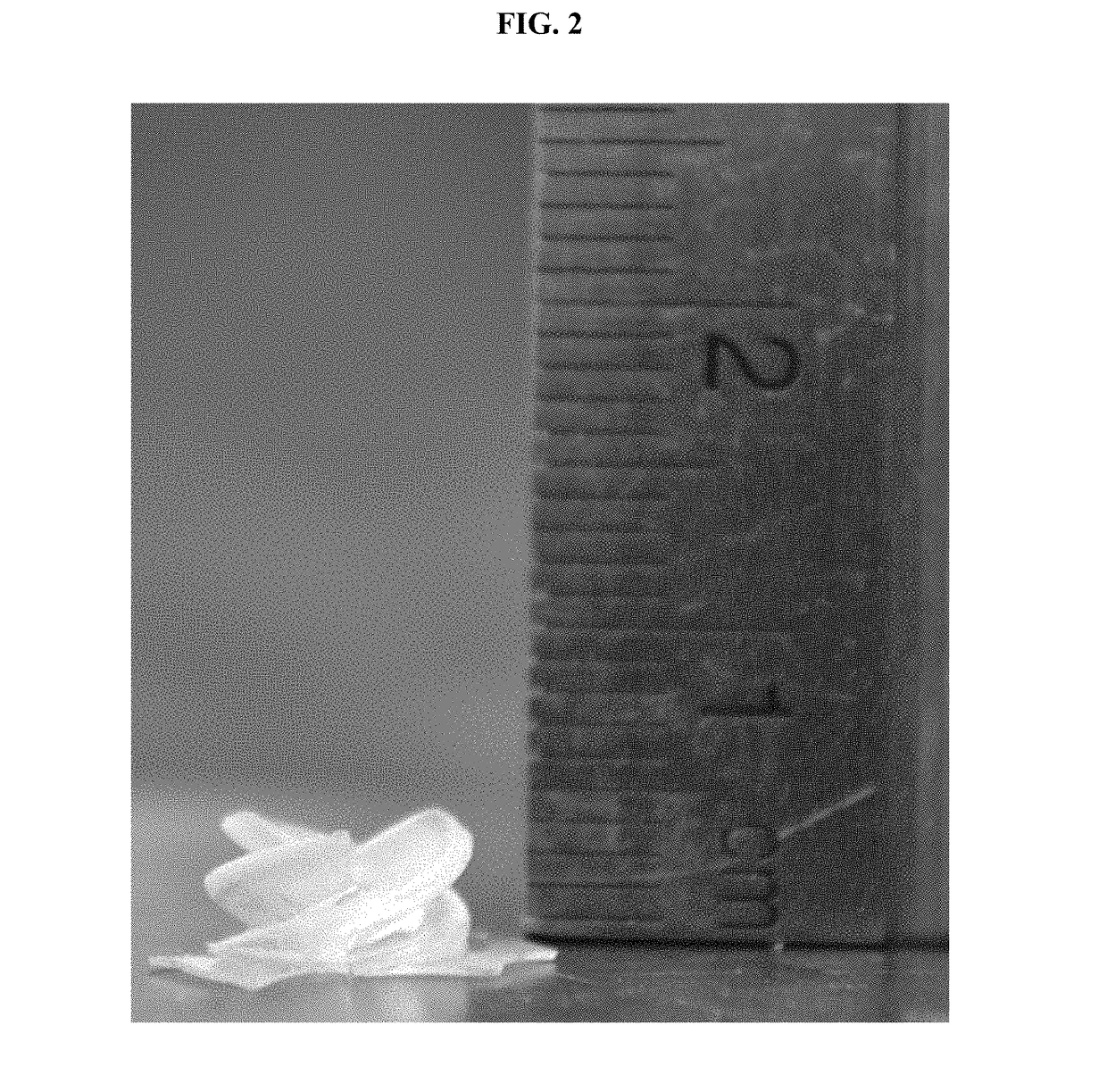Resin formulations for polymer-derived ceramic materials
a technology of resin formulation and polymer, applied in the field of formulation, can solve the problems of difficult processing of ceramics, inability to cast or machine easily, and severe reduction of the overall strength of materials
- Summary
- Abstract
- Description
- Claims
- Application Information
AI Technical Summary
Benefits of technology
Problems solved by technology
Method used
Image
Examples
example 1
c Stereolithography-Printed Polymer for Fabrication of 3D Ceramic Structure
[0146]A monomer mixture containing 100 parts of vinylmethoxysiloxane polymer, 100 parts of (mercaptopropyl)methylsiloxane polymer, 0.5 parts of 2,2-dimethyl-2-phenylacetophenone, 0.15 parts tert-butylhydroquinone, and 0.25 parts 2,2′-(2,5-thiophenediyl)bis(5-tert-butylbenzoxazole) (all parts by weight), is thoroughly stirred or blended to make sure the components are well-mixed and the mixture is a uniform system. The material mixture is then readily used for the stereolithography. The 3D print is performed using a Formlabs 1, SLA (Formlabs, Somerville, Mass., U.S.) with laser wavelength at 405 nm. The step size is 100 microns, and the resin setting is “Flexible.”
[0147]The preceramic resin formulation is printed into a preceramic polymer part. FIG. 1 shows a top-view photograph of the preceramic polymer part, while FIG. 2 shows a side-view photograph of the preceramic polymer part.
[0148]The preceramic polymer...
PUM
| Property | Measurement | Unit |
|---|---|---|
| Fraction | aaaaa | aaaaa |
| Fraction | aaaaa | aaaaa |
| Fraction | aaaaa | aaaaa |
Abstract
Description
Claims
Application Information
 Login to View More
Login to View More - R&D
- Intellectual Property
- Life Sciences
- Materials
- Tech Scout
- Unparalleled Data Quality
- Higher Quality Content
- 60% Fewer Hallucinations
Browse by: Latest US Patents, China's latest patents, Technical Efficacy Thesaurus, Application Domain, Technology Topic, Popular Technical Reports.
© 2025 PatSnap. All rights reserved.Legal|Privacy policy|Modern Slavery Act Transparency Statement|Sitemap|About US| Contact US: help@patsnap.com



